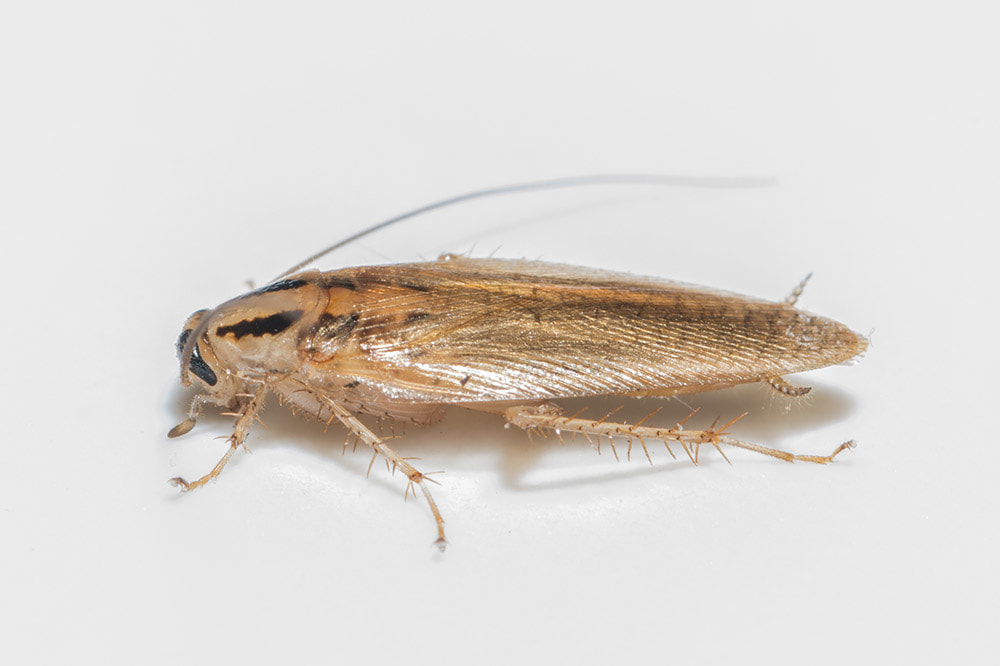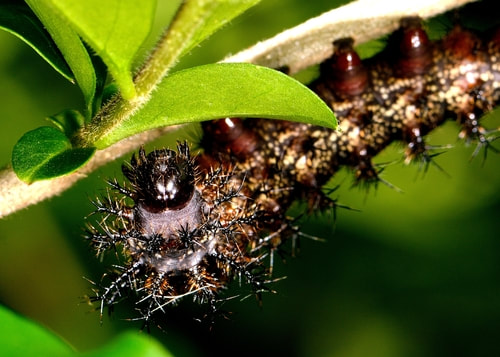|
Spring in South Louisiana is a vibrant season, filled with warm weather, blooming flowers, and the return of greenery. However, it also marks the return of various pests that can become nuisances to homeowners and gardeners alike. Understanding which pests to look out for during this season is crucial for effective pest control and ensuring your outdoor activities remain enjoyable. This blog post will guide you through the common pests that emerge in South Louisiana during spring and offer tips on managing them. Termites
South Louisiana is notoriously known for its termite activity, particularly in the spring when these pests swarm to start new colonies. The warm, humid climate of the region provides an ideal environment for Formosan and subterranean termites, which are particularly destructive. These termites can cause significant damage to homes and other structures, often unnoticed until it's too late. To prevent termite infestation, homeowners should:
Mosquitoes The spring rainfalls in South Louisiana create perfect breeding grounds for mosquitoes. These pests are not only annoying but can also pose health risks by transmitting diseases such as West Nile Virus and Zika Virus. To combat the mosquito population, individuals can:
Ants As the ground warms up in spring, ant activity increases. Fire ants, in particular, are common in South Louisiana and can deliver painful stings. Carpenter ants, which burrow into wood to create their nests, can also be a problem, potentially damaging wooden structures in and around your home. To deter ants, consider the following:
Rodents Rodents, such as mice and rats, may seek shelter in homes as they emerge from their winter hiding spots. These pests can damage property, contaminate food, and spread diseases. To prevent rodent infestations, homeowners should:
Cockroaches Cockroaches thrive in the warm and moist environment that spring in South Louisiana offers. These pests can enter homes in search of food and water, potentially spreading bacteria and allergens. To keep cockroaches at bay:
Tips for Managing Spring Pests in South Louisiana Managing pests requires a combination of preventative measures and timely action. Here are some additional tips to help keep your home pest-free:
Spring in South Louisiana is a beautiful time of year, but it also brings challenges in the form of various pests. By staying vigilant and implementing effective pest control measures, you can enjoy the season without the nuisance and potential harm these pests can cause. Remember, the key to pest management is prevention, early detection, and appropriate action.
1 Comment
You wander into your kitchen in the middle of the night to get a glass of water. When you turn on the light, you see cockroaches scurry to the shadows under the cabinets. When you open up your cabinets, you see unwanted pantry pests lurking within. While prevention is the best way to keep bugs out of your home and kitchen, you can still rid your space of unwanted pests once they have decided to invade. Follow these tips to take back your kitchen from meddlesome insects 1. Prevent Entry
Bugs do not respect a locked door, so you have to seal up any possible entry point from the outside. Armed with your caulking gun, seal up any visible holes on the exterior of your home. If there are cracks in your foundation, have them repaired. Test the doors and windows of your home to see if there is an air leak. If air can get in, so can cockroaches. Replace worn weather stripping to seal up the leak and keep bugs out. 2. Block the Inner Path Once you have sealed the outside of your home, set up a secondary barrier on the inside. Inspect your walls, baseboards and cupboards for cracks and crevices. Grab that caulking gun again and make those cracks disappear. This is especially important if you live in an apartment building, as you have no control over the pest control efforts of your neighbors. Just because they have cockroaches, however, does not mean you have to resign yourself to that fate. 3. Fix Water Leaks Pantry pests, particularly roaches, love water. If your kitchen sink or the pipes underneath it leak, bugs consider it an open invitation. Fixing the leak and drying out your cabinetry gets rid of their oasis in your home. It also prevents water damage that can weaken the cabinet’s structure, allowing for holes through which bugs can enter. 4. Cool It Off If you are looking for another reason to crank up your air conditioner, you can always cite pest control. Cockroaches take advantage of the formidable heat of summer to spread their wings and fly. The warmer it is, the better their muscles function. Keeping your home as cool as possible may not kill them, but it probably will keep them from going airborne and might make them slower, easier targets. 5. Cover Items Up If pantry pests invade your kitchen, they are going to go right for the snacks. Put pet food up at night in a sealed receptacle to ensure that it does not lure pests. Keep your pantry items in airtight, leakproof containers that keep bugs out and seal in freshness. Stay aware of the expiration dates of all your pantry items, as food tends to expand when it rots or goes stale, potentially leading to bursting packages that signal a smorgasbord for cockroaches. Keeping food sealed away leaves exploring insects nothing to find. 6. Keep It Clean A clean kitchen is less likely to attract unwanted pests. Bugs have a built-in radar for food remnants left on dirty dishes. Wash dishes every time you cook or eat, and wipe down cabinets to remove any remaining food particles that are left behind. It is also a good idea to sweep the floor every night to clean up anything that has spilled from the countertops. A free meal signals welcome. Do not give the insects that long to infest your home the satisfaction of giving them a reason to stick around. 7. Dry It Up As mentioned before, cockroaches love moisture and will seek it out any chance they get. If your pantry is not well ventilated, it could become just the sort of damp environment that pantry pests love. Make sure that the place you store your food has sufficient airflow to keep everything dry and pest free. 8. Centralize Food Try to store and consume all food in a centralized location. It might be tempting to take a midnight snack to bed, but spreading crumbs out over the house makes it more difficult to keep everything clean and free of bug infestations. If food is only allowed in certain areas of your home, you do not have to worry about food becoming a temptation for cockroaches to enter through every window, crack and drain. 9. Use the Bait If you do find bugs in your kitchen, it is time to go to war. Roach bait comes in a wide variety of applications and strengths, so it is easy to find a product to solve your particular problem. Putting baits near water sources and in corners can help curtail the problem. Several products also offer a gel-based substance you can squeeze into crevices if you want a treatment that is a little more discreet. If you have small children or pets, you can opt for a more natural solution, such as a sprinkling of boric acid, which is safe for humans and larger animals but toxic to cockroaches. 10. Call the Experts Whether you are preventing pantry pests or treating an existing problem, it is vital to call extermination specialists to assist in the process. A regular perimeter treatment around the outside of your house can help discourage pests from getting near it. Most pest control experts are willing to set up a regular schedule so that you know when to expect them every month or quarter. They can also spray the perimeter of your kitchen. Be sure to follow preparation instructions closely prior to their visit so that they can spray for cockroaches without endangering your family’s health. 10 Ways to Win the Fight There are many things you can do to fight against pantry pests. Ideally, your prevention efforts will be successful so that you do not have to contend with unwanted insects in your kitchen. If you discover that an infestation is already present, however, there are measures you can take to remedy the problem. If you see cockroaches scurrying across the floor or counters at night, you now have the tools to turn your kitchen into an inhospitable place for them. Help! Are These German Cockroaches? Your home is something you are proud of. You enjoy inviting friends and family over for backyard barbeques, holiday parties and other gatherings. How embarrassing would it be to have uninvited guests, such as German cockroaches, scuttle across the counter while you are serving delicious plates of meats and cheese? As a business owner, the appearance of these creepy crawlies in your store can be even more unwelcome as they are sure to scare away customers. Depending on how many pests you see, turning to a pest control professional may be your only course of action. There are plenty of pests that can make their way into your home or commercial space. If you notice a bug and its friends in your home or business, you may want to identify what you are dealing with, figure out how it got in, determine if it is an infestation, understand why you do not want it in your space and get it off your property. Identifying the Bug
How can you figure out exactly what you are dealing with? German cockroaches have a few important identifying features:
While you may notice wings on the pests, you do not have to see them fly to know what you are dealing with. In fact, most of these critters prefer to scuttle around on warm, humid surfaces in your home or business, such as floors and counters. You may never see them fly, and that is OK. Now that you know they do not usually use their wings, you may be able to sleep better at night. German cockroaches are actually one of the smaller species of cockroaches, but that does not make them any friendlier. If you are still not sure what sort of critter you have in your house, you can turn to a pest expert. Figuring out How It Got In The first question you may ask yourself after spotting a cockroach is, how did it get inside? Unfortunately, pests can get into your home through a variety of ways. German cockroaches in particular can ride in with your groceries or hide in the folds of a cardboard box. Some people may even have eggs on their clothing or shoes without realizing it, which means your guests and customers could be introducing the bugs to your space. Cockroaches can also find their own way into your building. They do not need a big gap to make it into your place. The bugs can squeeze under doors or in the gaps around pipes. As you search your home for the bug's entry point, you may come to realize how vulnerable your building is to pest infestation. There are likely hundreds of ways the insect could have gotten in. Determining If It Is an Infestation Is seeing one bug a problem? It definitely is not pleasant, but typically it takes little effort to get rid of a single cockroach. So how can you tell if you have a real problem with German cockroaches?
Figuring out if you are dealing with a single bug or an infestation can take time. You can either wait until you start spotting more roaches around your space, or you can call in a professional team to have them inspect your home for further signs of infestation. Understanding the Consequences You have German cockroaches in your home. Sure, they are not pleasant to look at, but is it really a big deal to share space with these bugs? The short answer is yes. While you may only notice one or two right now, these pests can multiply quickly. A female roach that has mated once can produce 40 eggs four to six times. Because of this fast reproduction rate, the bugs can go from not a problem to an infestation surprisingly quickly. The more there are, the more challenging it is to get them completely out of your home. These cockroaches are bad for your home and business because they can ruin your possessions. Not only do they love almost any type of food, they will also eat glue. This means the little bugs can start to eat away book bindings, soap bars and many other household items. If you still need more proof that German cockroaches are bad news, consider the health effects they can have on you and anyone else who spends a lot of time in your home or business:
German cockroaches not only have a major ick factor, but they can cause some serious health problems for anyone who spends too much time sharing a space with them. Getting Them Out Once German cockroaches are in your home or business, it can be hard to get them out. Remember how quickly they reproduce? If you do not act fast, you may end up dealing with these pests and their offspring indefinitely. There is no upside to having these bugs in your place. You need to turn to a Baton Rouge pest control company well-versed in getting rid of these creepy crawlies. With their assistance with a regimented treatment, barrier exclusions and vigorous cleaning, you can rid your home of the unsanitary, unsightly roaches. It’s spring again, the time of year when we shake off the winter doldrums and welcome flowers, romance — and insects. Though the last aren't exactly welcome, they're certainly a part of spring in the city. Like their human counterparts, bugs love to emerge after a long winter’s nap for some fun in the sun. Unfortunately, that can translate to parties on your patio and luaus on your legs. While New Orleans doesn’t exactly go into the deep freeze the rest of the country faces, our shift in humidity and temperature still leads to a very real increase in bug activity come late March. Preparing for the seasonal uptick involves knowing what you’re facing and then talking to a qualified specialist in New Orleans pest control. Here are some ways to recognize the top spring pests in New Orleans. Figure out if they’re what’s bugging you! Buck Moth
The oak trees of New Orleans are a source of pride. Unfortunately, they’re also the exclusive home to a particularly troublesome spring pest known to New Orleans pest control specialists for its nasty stinging ways. It’s the buck moth caterpillar, and it’s one of the more annoying pests common to spring in the city. These innocent-looking guys are not a problem until they land on you and sting, which they may happen to do more often than you’d expect. These caterpillars are the larval stage of the buck moth, a striking brown and white moth that takes flight mostly during deer season. They lay their eggs around that time in oak trees. By spring, those eggs hatch and out come thousands of tiny, prickly caterpillars. The trouble comes when those caterpillars fall or crawl out of a tree and land on your unsuspecting shoulder. Their bodies are built with spines to ward off predators. These hollow needles release a poison that stings if it pricks your skin. Avoid their nip by staying out of the oak shade when possible. New Orleans pest control experts say if you do find yourself pricked, use Scotch tape to pull the spines out and sooth the pain with an ice pack. Roaches Heat, moisture and humidity — all the things that make a New Orleans spring sticky are the things that make it heaven for flying cockroaches. These classic pests thrive in just about any city, but New Orleans is especially favored due to its climate and the abundance of old buildings with lots of cracks and crevices in which to hide. In fact, Bloomberg named the Crescent City the most roach-infested in the nation in 2017. Experts say the lack of consistent freezing makes it hard to really put a dent in the city’s abundant population of these skittering creatures. They love to live in the leaf litter and bark of the live oaks that are abundant in the city, putting them in the perfect position to creep into a nearby house. Once there, New Orleans pest control specialists say roaches can survive by eating anything from paper to glue from stamps. Even spotless homes can be impacted if they have a leak or some other condition leading to a particularly damp environment. Because roach infestation can be so hard to manage, it’s best to contact a New Orleans pest control specialist when you see the first one, rather than trying to handle these critters yourself. Formosan Termites In New Orleans, Formosan termites have taken wood destruction to a level far beyond that of their native termite cousins. These insects are an invasive brand of the standard wood-chomping pest, first introduced from East Asia. Formosan termites thrive in muggy climates like Florida and Louisiana. In fact, they got so destructive in the French Quarter that the federal government sponsored a program to place termite baits and traps throughout the historic district. New Orleans pest control experts say a single colony can contain millions of termites, compared to just thousands for native subterranean termites. It’s typical to see swarms of these destructive creatures in early spring evenings. If you see them downtown, simply avoid them. However, if you see these pests near your home, it could be a very bad sign. Seal up your doors and windows and make a call to a trusted New Orleans pest control specialist with experience treating these troublesome bugs. Mosquitoes April showers may bring May flowers, but in New Orleans, they can also bring an uptick in those most common warm weather menaces, mosquitoes. The Crescent City has an especially nasty history with these bloodsuckers. In the early 19th and 20th century, yellow fever carried by these insects killed more than 41,000 men, women and children. Nowadays, mosquitoes are linked to West Nile Virus, which they can pass to humans after biting infected birds. Concern also has surrounded Zika virus. This mosquito-borne illness has been blamed for causing serious birth defects in pregnant women who become infected. Mosquitoes breed in standing water, which makes the Big Easy,with its low elevation and abundant swamp areas, an ideal site. Add in the increased humidity and rains with the change of seasons, and New Orleans pest control experts can tell you that you have a recipe for mosquito disaster. There’s no way to avoid mosquitos entirely, but there are plenty of smart options to minimize their numbers and impact. Remove standing water in containers around your home and address any drainage issues that can lead to pools of water. Make sure to keep open windows screened and limit time outside during dusk and dawn, when some species are especially active. If they are still a major problem, it may be time to talk to a New Orleans pest control specialist to investigate some of the more serious steps you can take. New Orleans is beautiful year-round, but especially in the throes of spring. Unfortunately, the beauty of the growing season doesn’t curtail the annoyance presented by pests. You don’t have to let insects spoil this time of year. Understanding what signs to look for can help you know when it’s time to call a New Orleans pest control specialist. |
AuthorI really enjoy researching and writing about pests. The more we know about bugs, the easier it becomes to control them. Categories
All
Archives
February 2024
|
|
© 2021 Bug Ninja Pest Control.
All rights reserved. |
Services |
Contact |
|






 RSS Feed
RSS Feed

